
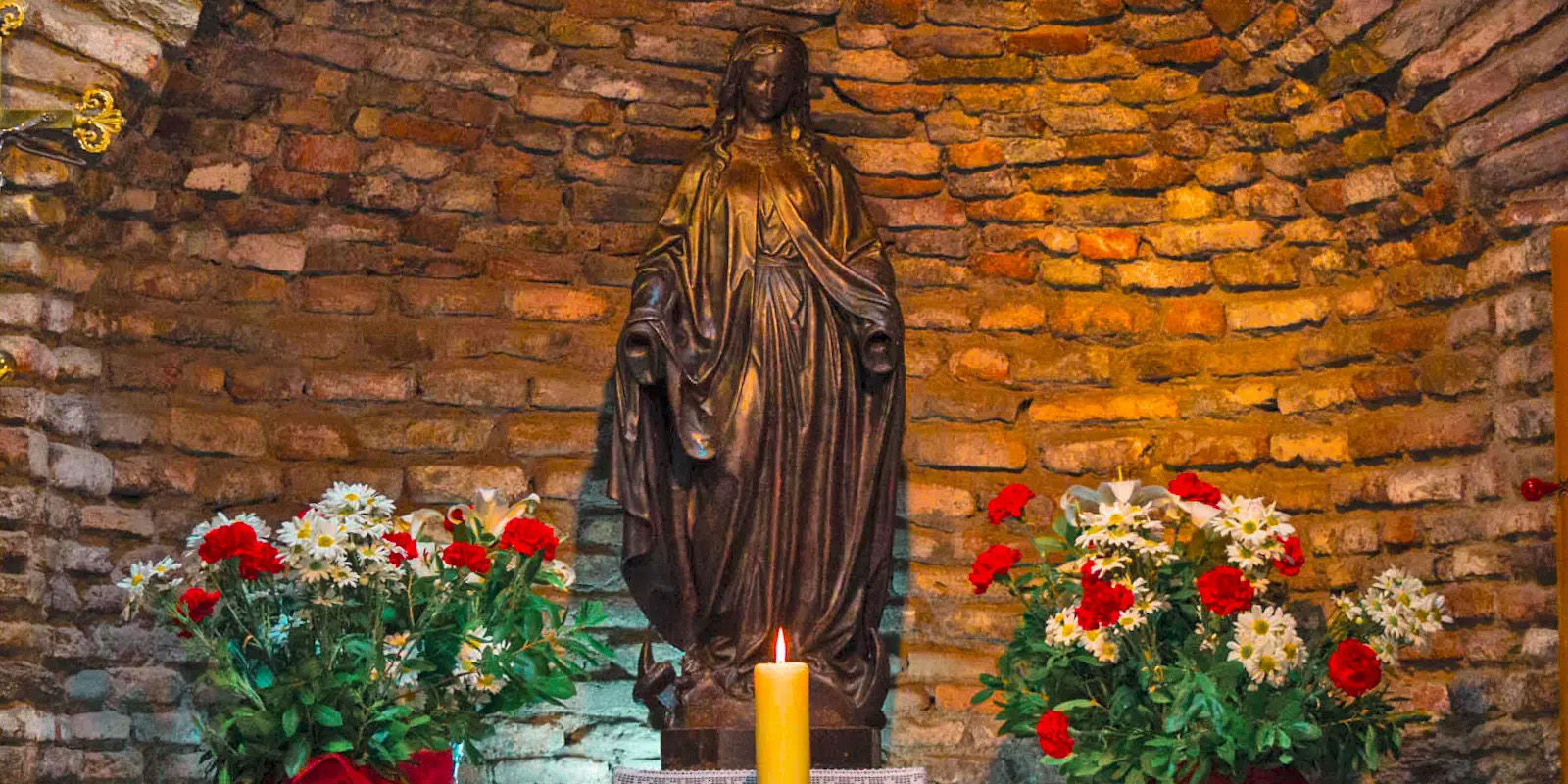
The House of the Virgin Mary (Meryem Ana Evi): A Visitor's Guide
High on a tranquil, wooded hilltop overlooking the ancient ruins of Ephesus lies a small stone house of immense spiritual importance. This is Meryem Ana Evi, the House of the Virgin Mary. It is a world away from the grand marble avenues below—a place of quiet contemplation, profound peace, and a story that bridges faith and history.
For millions of pilgrims and visitors, this humble chapel is believed to be the final home of the Virgin Mary, where she spent her last years under the care of the Apostle John. This guide will walk you through its incredible story, its spiritual significance, and the moving experience of visiting this sacred shrine.
360° Virtual Tour
Experience the sacred interior of the Virgin Mary's House
Full screen recommended • Use mouse or touch to navigate
The House of the Virgin Mary - Quick Facts
The Story of the House: A Vision and a Discovery
The rediscovery of this house is a story in itself, blending mystical vision with historical investigation.
The Visions of a German Nun
In the early 19th century, a bedridden German nun and mystic, Blessed Anne Catherine Emmerich, who had never left her home country, began to have detailed visions of the life of Jesus and Mary. She described, with extraordinary accuracy, the journey of St. John and Mary to Ephesus and the exact location and appearance of the small stone house where Mary lived until her Assumption. Her visions were transcribed and published after her death in a book titled "The Life of the Blessed Virgin Mary."
The 1891 Expedition
Decades later, in 1891, a group of skeptical Lazarist priests from Izmir read the book. Intrigued by the detailed descriptions, they decided to follow them as a map. They journeyed up Mount Koressos and, to their astonishment, found the ruins of a small, ancient chapel exactly where the visions had described it. The foundation was consistent with 1st-century AD architecture, and local Orthodox villagers had for centuries made pilgrimages to the site, which they called Panaghia Kapulu ("Doorway to the Virgin"), to honour the dormition of Mary.

A Place of Pilgrimage: The Spiritual Significance
While the Vatican has never pronounced on the absolute authenticity of the house itself, the stream of miracles and the long-standing local tradition led it to officially declare the site a Holy Place and shrine for pilgrimage.
Sanctioned by Popes: The apostolic blessing and visits from three modern Popes have elevated its status to one of the most significant Marian shrines in the world.
A Shrine for Two Faiths: The site holds a special, unifying power. Mary (or Meryem) is a deeply revered figure in Islam, mentioned more times in the Qur'an than in the New Testament. As such, the house is a sacred place of prayer for both Christians and Muslims, creating a unique atmosphere of shared reverence.

What to See and Do: A Visitor's Walk-Through
A visit to the House of the Virgin Mary is a serene and structured experience.
The Chapel (The Stone House): You will follow a path to the small, humble stone building itself. Inside is a simple, quiet chapel. The atmosphere is one of profound reverence. Visitors move through in a single line, and photography is not permitted inside. It is a place for quiet prayer and reflection. You can light a votive candle in the adjacent room.
The Healing Springs: Directly below the house are three fountains from which visitors can drink. The water comes from a spring beneath the chapel and is believed by many to have healing properties. You are welcome to drink from the taps or fill a small bottle to take with you.
The Wishing Wall: One of the most visually striking features is the "Wishing Wall." Following an ancient tradition, visitors from around the world write their prayers and intentions on pieces of paper or cloth and tie them to the massive grilles provided. The wall flutters with thousands of personal hopes and prayers, creating a powerful collective testament to faith.
Planning Your Visit: Practical Information
How to Get There: The house is not within the Ephesus archaeological park. You must make a separate journey up the mountain. The easiest ways are by taxi from Selçuk or the gates of Ephesus, or as part of an organized tour. Many Ephesus tours include it as a stop.
Tickets & Hours: The site has its own administration, entrance fee, and opening hours, which are generally from sunrise to sunset.
Dress Code & Etiquette: This is a holy place, and a respectful dress code is strictly enforced for all visitors. Shoulders and knees must be covered. Wraps are usually available for loan at the entrance if you are unprepared. Please maintain a quiet voice and a respectful demeanor throughout your visit.
Duration: Plan for about 45 to 60 minutes for a complete visit.
More Information About Ephesus
Explore Ephesus pages to plan your perfect visit
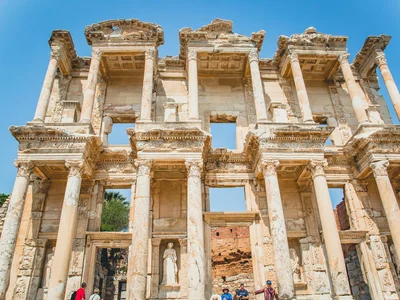
Ephesus Library
It serves not only as a reminder of Ephesus's glorious past but also as a testament to the enduring power of knowledge and culture.
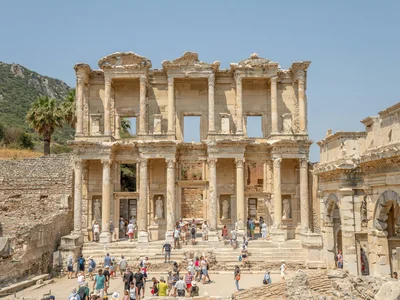
Ephesus Ruins
Ephesus, situated a mere 18 kilometers from Kusadasi, is celebrated as a prominent ancient metropolis globally.
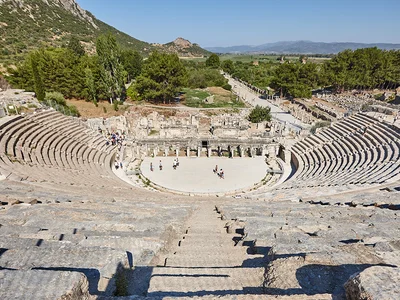
Ephesus Theatre
The grand theater of Ephesus stands as an impeccably preserved and truly remarkable architectural marvel.
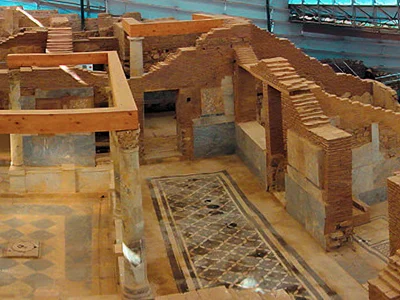
Ephesus Terrace Houses
The Terrace Houses in Ephesus are opulent residential dwellings situated adjacent to Curetes Street.
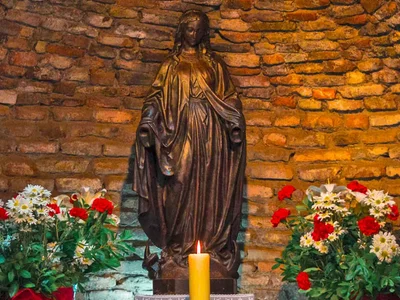
The House of the Virgin Mary
High on a tranquil, wooded hilltop overlooking the ancient ruins of Ephesus lies a small stone house of immense spiritual importance.
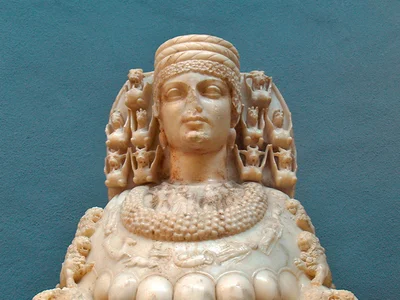
Goddess Artemis
At the heart of Ephesian culture stood the magnificent Temple of Artemis, one of the Seven Wonders of the Ancient World.
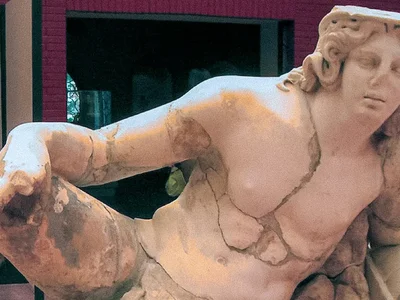
Ephesus Indoor Museum
The Museum of Ephesus, located in the Selcuk district, showcases artifacts unearthed during excavations in Ephesus since 1964.

The Seven Sleepers of Ephesus
Deep within the annals of ancient Ephesian folklore lies a story shrouded in mystery and wonder - the legend of the Seven Sleepers.

The Temple of Artemis
Nestled in the ancient city of Ephesus, in what is now modern-day Turkey, stands the remnants of one of the most remarkable structures.
Frequently Asked Questions
Is this really the Virgin Mary's house?
While there is no definitive archaeological proof, the Catholic Church has officially sanctioned it as a Holy Place worthy of pilgrimage based on a confluence of historical tradition, the visions of Bl. Anne Catherine Emmerich, and consistent faith-based accounts. It is a place to be experienced with faith and respect.
Can anyone drink the water from the springs?
Yes, the water is potable and available to all visitors.
Can I attend a mass service there?
Yes, mass is held regularly at the outdoor altar. Check the official Meryem Ana Evi website for the current schedule of services.
How do I get to the House of the Virgin Mary?
The house is not within the Ephesus archaeological park. You must make a separate journey up the mountain. The easiest ways are by taxi from Selçuk or the gates of Ephesus, or as part of an organized tour.
What is the dress code for visiting?
This is a holy place, and a respectful dress code is strictly enforced for all visitors. Shoulders and knees must be covered. Wraps are usually available for loan at the entrance if you are unprepared.
How long should I plan for my visit?
Plan for about 45 to 60 minutes for a complete visit to fully experience the chapel, healing springs, and wishing wall.